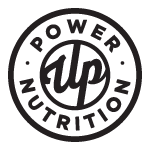
I was texting with a friend this weekend and as usual the conversation drifted to nutrition. She was considering doing a round of Whole30, I dug into her motive a little bit and discovered she wanted to increase her vegetables consumption. For sure doing the Whole30 is such a valuable way to learn about food quality and get in touch with the benefit of eating real food first hand. But it got me thinking about how we go about educating our clients and members at PowerUp Nutrition and the current information we pass on.
We put a lot of emphasis on food quantity while counting macros. It can be easy at first to overlook food quality. Dialling your quantity is the most important when it comes to determining your weight on the scale. But that in no way implies that you body weight is the only measure of success. It does not paint a full picture.
Ignoring food quality is completely missing the point.
How much you eat will determine your weight even if that statement over simplifies things, iy holds true in general. But it is what you eat that will have a direct relation to your body composition and health.
I have shared before my concern with IIFYM and trust me I can see the appeal. It can be mind blowing to first realize that you can actually have ice cream and donuts and still get some abs. But let’s not confuse a flat defined stomach as a measure of health.
I love that counting macros is a flexible approach to nutrition. It makes it sustainable and a much more balanced lifestyle. But let’s ditch the If It Fits Your Macros mentality and stop justifying your daily pop tarts habit as healthy or needed to reach your macros. We can do better than this people! And not meaning you can’t never have another bowl of ice-cream. But if you find yourself thinking I can’t eat a banana because it has too many carbs but end each day with a bowl of fro-yo or Halo top because it fits your macros you have gone too far down the wrong path!
First of all let’s look at the current guidelines as defined by the current Canada’s Food Guide.
Recommended Number of Food Guide Servings per Day
| Children | Teens | Adults | |||||||
| 2-3 | 4-8 | 9-13 | 14-18 Years | 19-50 Years | 51+ Years | ||||
| Girls and Boys | Female | Male | Female | Male | Female | Male | |||
| Vegetables and Fruit | 4 | 5 | 6 | 7 | 8 | 7-8 | 8-10 | 7 | 7 |
Now let’s be clear that food guide guidelines are designed for you to meet the minimum requirement for health. They are not designed for you to perform at a high level or thrive. And of course won’t ever account for your individual needs.
If you are an high level athlete you needs will increase. Most sport nutritionist will agree that athletes need to increase consumption of fruits and vegetables to increase their intake of antioxidants. Antioxidants play an important role in our immune system which tend to be compromise when training at a higher level. But also reduces exercise-induced oxidative stress and muscle damage. Particularly important during intense training periods and higher period of stress, both physical and emotional.
Eating the right amount of fruits and vegetables is sometimes hard due to digestive, time and travel constraints. If you all of the sudden double your produce and fibre intake it may be hard for your digestive system to keep up with this and you may end up spending too much time in the bathroom! There’s also the added challenge or travelling and eating out for work. For those reason on top of increasing your intake of fruits and vegetables, it is a great idea to incorporate a good quality Green supplements in your routine.
How much is enough? What does a serving look like.
My current recommendation for both male and female clients is 8-10 servings. Higher volume athletes should aim for 12-15.
A serving of fruits and vegetables is roughly 1/2 cup. For greens like spinach and lettuce make that 1 cup. Now just like your source of protein and anything else you eat it is important to vary your diet and eat a wide variety of fruits and vegetables to get a wide variety of vitamins and minerals. If you eat apples, bananas and broccoli and carrots every day chances are you will be missing out on a lot of key nutrients. We are lucky to have access to a wide range of fresh produce year round now days. I am a huge fan of eating local and in-season when possible, but don’t discount canned and frozen produce. Both are on par with their fresh counterpart when it comes to their nutrition content. And often the price point is much better too.
I pride myself on cooking at home a lot and eating healthy and it was a real eye opener to look at my own intake more carefully. I met my 8 servings target, but had sadly without enough variety. I found myself eating the same things most of the time. Having my go-to favourite and sticking to same meals often for breakfast and lunch especially. I have since made a point to vary what I buy. Since convenience is key, if you have it around and available you will be much more likely to eat it! And I have bumped up my daily target to 12+ to meet my personal health goals/needs.

Lastly what about those of you who don’t like vegetables or the many who avoid fruits because they fear they will lead to weight gain. Let’s put the fear down. Of course fruits have a higher sugar content and that makes them easier to eat and love and for some easier to over eat. But nature made fruits pretty amazing, while they do come with sugar they also come with a healthy dose of fibre making them a lot better for you then cakes and candies. I still keep my personal intake to around 2-4 servings a day. There are a few reasons for this, but for me personally after experimenting this works best. Since fruits are more sugary, I find if I eat too many of them I end up craving more and more sugar. They also tend to go right through me and not be as filling and satiating.
We can also generalize and say that for body composition or performance goals, they are not ideal. Fructose is preferentially stored in the liver as glycogen and when the liver is full it does not convert to storing in muscles, it has a tendency to be stored as fat. Also statistically speaking consumption of vegetables and salad proved to have a greater “protective effect” than eating fresh fruit on your health.
The moral just like with pretty much anything in nutrition is to find a balance.
If vegetables are less appealing to you try eating them and preparing them in different ways. You can sneak in greens in your smoothie and spinach and kale may give your smoothie a green hue but won’t change the taste. You can use your food processor to chop them really small and add them to meatloaf, meatballs, meat sauce and chilli. When finely diced they can have the texture of more ground meat, that trick always works well with toddlers and picky eaters. You can roast them which brings out their natural sugar and sweetness. You can also dip them in fun dips like hummus, tatzikis and ranch dressing. Experiment and expand your palate over time.
Start thinking of your health inside and out. Eat varied sources, just visualize eating the rainbow and consider investing in a good green supplements for back up.
Follow us on Facebook and Instagram for some meal inspiration and show us how you eat the rainbow by tagging us in your post with #powerupnutrition .
Annie 🙂



